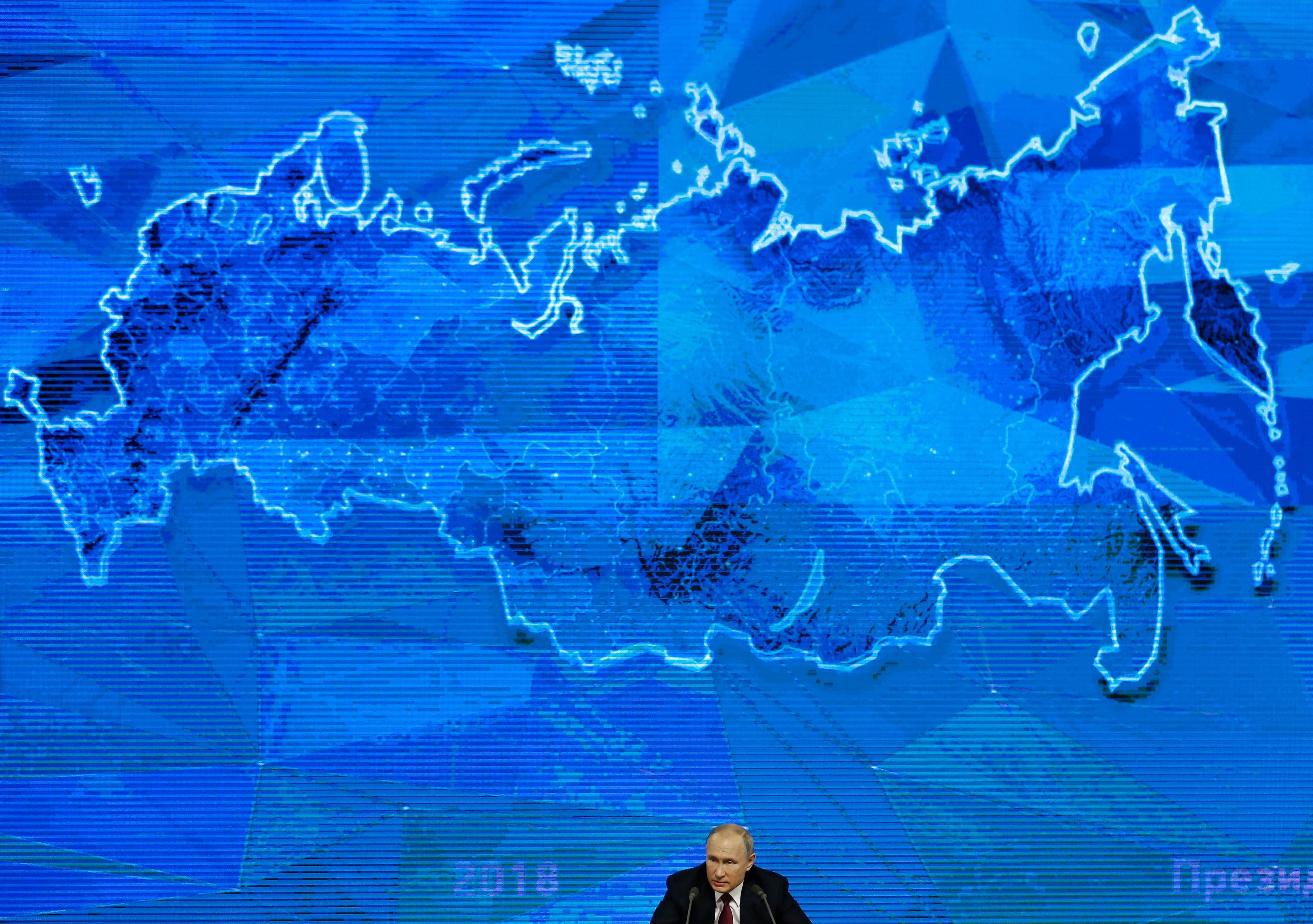WASHINGTON ― The United States and Russia have shown a willingness to extend the New START nuclear pact before it expires next year, but the ball is now in Russia’s court, a Pentagon official said Wednesday.
New START, which limits each country to no more than 1,550 deployed nuclear warheads and 700 deployed missiles and bombers, expires Feb. 5 unless the two sides agree to extend it for five years. The 2010 pact is the last remaining bilateral nuclear arms control agreement between the Cold War adversaries.
U.S. representatives, in recent talks with Russia in Vienna, said Washington would consider an extension if there were a new framework to include Russia’s range of unconstrained nonstrategic nuclear weapons and the implementation of stronger verification measures, as well as the inclusion of China in future talks. The U.S. team offered Moscow proposals to that effect.
“Now we’re waiting to see if Russia has the political will now to come and talk to us about it,” Robert Soofer, deputy assistant secretary of defense for policy for nuclear and missile defense, said during an Air Force Association event on Wednesday.
At the crux of the impasse: Russia supports an unconditional extension but says it will not agree to changing New START. China, whose nuclear arsenal is dwarfed by that of the U.S., has said it has no interest in joining the negotiation, and Russia has also refused to force China to the table.
Russia has said if China is included, France and the U.K. ― which have nuclear arsenals in the hundreds ― must also join.
On Wednesday, Soofer did not rule out five-way talks, though it’s unclear whether that reflects the position of U.S. negotiators.
“I won’t speak for allies, but you may eventually see a much larger multilateral approach as opposed to just the three-way approach that we, we think about it right now,” Soofer said.
On Tuesday, the Pentagon reported that China likely seeks to double its stockpile of nuclear warheads in the next decade as part of its global ambitions. China is also moving toward a more ready “launch-on-warning” posture for its missiles with an expanded silo-based force, raising questions about its “no-first-use” policy.
Soofer, who doesn’t believe China would maintain such a policy in extreme circumstances, argued that the move by Beijing was yet another reason to get it to the negotiating table. China, meanwhile, is closing the gap with Russian and U.S. nuclear capabilities, he said.
“At the end of the day, they may be worse off by increasing the size of their nuclear forces, if this precipitates a response or an increase by the U.S. and Russia,” Soofer said. “And so the approach right now is: Let’s talk.”
Aside from the geopolitics, there are Washington politics too. Though Soofer offered a lengthy defense for current U.S. nuclear modernization efforts, he said the cost will eventually double from 3.5 percent of defense spending and spark fights involving Congress and the Defense Department. (An exit from New START may cost even more.)
“This is going to put a lot of pressure on the services, no doubt,” Soofer said. “On Capitol Hill, as the numbers go up, there’s more of an opportunity for those who take a more simple approach to deterrence to argue, ’Well, we can’t afford this.’ ”
Still, modernizing America’s nuclear triad has support in the White House, and to a good degree in Congress, evidenced by the House and Senate passing defense policy bills this year that fully fund each leg.
Soofer speculated that even if President Donald Trump’s rival, Joe Biden, were elected, support would remain “solid” for the triad, the F-35 Joint Strike Fighter and the Long Range Standoff Weapon, which is a nuclear-capable, air-launched cruise missile.
“I don’t foresee [internal debate over the nuclear triad] occurring under a Trump administration over the next four years, but if there were to be a new administration, depending on who is appointed in a position of authority to make these decisions, you may have these types of discussions,” Soofer said.
A Biden administration, he said, would likely host arguments over a no-first-use policy and whether to proceed with a nascent nuclear-armed, submarine-launched cruise missile, which is meant to deter Russia from using its tactical nuclear weapons. (Biden reportedly advocated for a no-first-use policy as vice president and on the campaign trail.)
After surviving a debate in Congress earlier this year, the Air Force’s Ground Based Strategic Deterrent program is on track for an award by the end of September, Soofer said. The program has avoided pandemic-related delays that have stricken other military efforts.
Northrop Grumman is expected to win an estimated $85 billion to design and build the missile ― after Boeing declined to move forward following Northrop’s acquisition of solid-fuel rocket motor-maker Orbital ATK.
GBSD is set to replace the Minuteman III intercontinental ballistic missiles in the mid-2020s. The Pentagon’s top acquisition official, Ellen Lord, has said there is “no margin” to do another service life extension for the Minuteman III, which was fielded in the 1960s and has gone through only minimal upgrades over its 50 years of use.
Joe Gould was the senior Pentagon reporter for Defense News, covering the intersection of national security policy, politics and the defense industry. He had previously served as Congress reporter.





